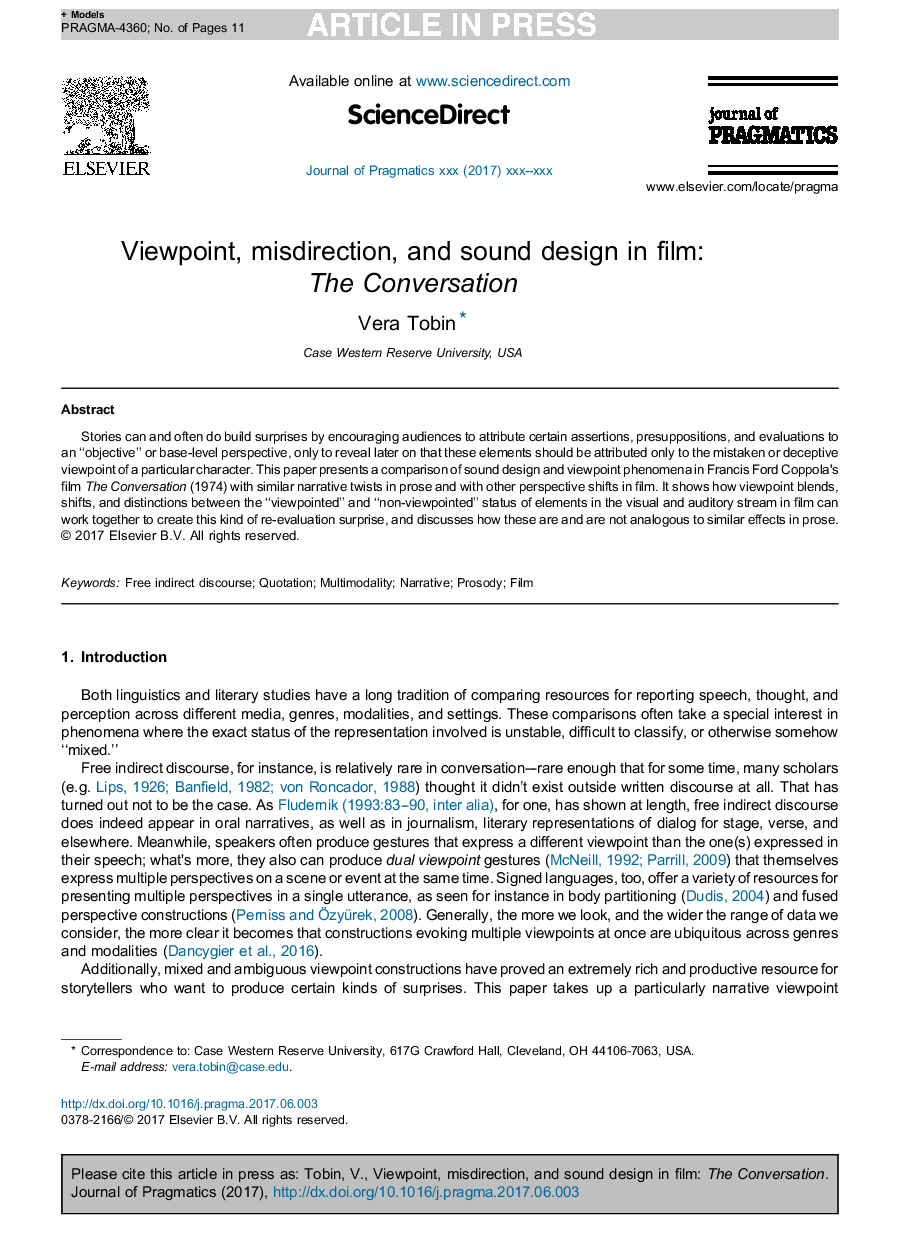| Article ID | Journal | Published Year | Pages | File Type |
|---|---|---|---|---|
| 7297722 | Journal of Pragmatics | 2017 | 11 Pages |
Abstract
Stories can and often do build surprises by encouraging audiences to attribute certain assertions, presuppositions, and evaluations to an “objective” or base-level perspective, only to reveal later on that these elements should be attributed only to the mistaken or deceptive viewpoint of a particular character. This paper presents a comparison of sound design and viewpoint phenomena in Francis Ford Coppola's film The Conversation (1974) with similar narrative twists in prose and with other perspective shifts in film. It shows how viewpoint blends, shifts, and distinctions between the “viewpointed” and “non-viewpointed” status of elements in the visual and auditory stream in film can work together to create this kind of re-evaluation surprise, and discusses how these are and are not analogous to similar effects in prose.
Related Topics
Social Sciences and Humanities
Arts and Humanities
Language and Linguistics
Authors
Vera Tobin,
